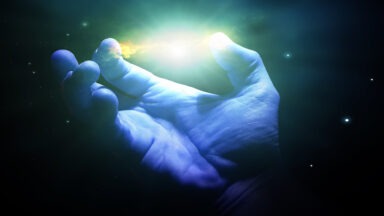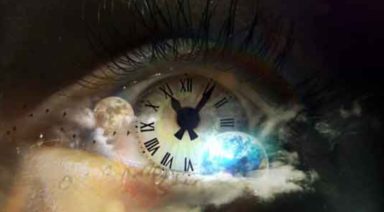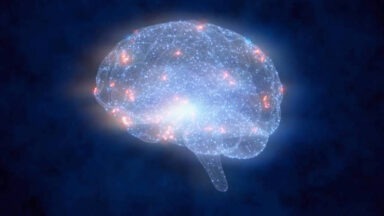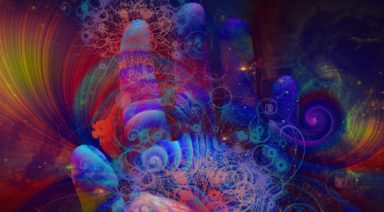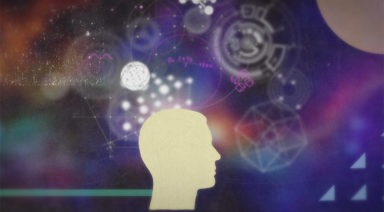Is There Any Danger in an Akashic Records Reading? Myths and Truths

In recent years, the practice of accessing the Akashic Records has gained great popularity in the spiritual world, yet it is not without question. For some, they represent a source of guidance and healing; for others, a terrain full of unknowns and risks. In this article we explore what the Akashic Records really are, analyze their reliability and debunk some of the most common myths surrounding them.
Table of Contents
- What Are the Akashic Records?
- Are the Akashic Records Reliable?
- Myths About the Akashic Records
- Benefits of Opening the Akashic Records
- How to Safely Approach the Akashic Records
What Are the Akashic Records?
The Akashic Records are an energy field that stores the universal memory of all that has happened, is happening and could happen. They are often described as a “spiritual library”, accessible to those seeking guidance, healing and a deeper understanding of their life and purpose.
This concept is based on the idea that everything in the universe is interconnected, and that this energetic network records every thought, emotion and action. Accessing the Akashic Records does not involve a physical act, but a spiritual connection that is achieved through techniques such as meditation, sacred prayer or guided visualization.
The Akashic Records are a valuable tool for self-discovery and spiritual growth. By connecting with this source of wisdom, it is possible to gain clarity on personal patterns, resolve important doubts and work on emotional or energetic blockages.

Are the Akashic Records Reliable?
The Akashic Records are a reliable source of spiritual wisdom due to their high vibrational nature, based on love and light. This energetic field is designed to provide clarity, healing and guidance, aligning the information received with the highest truth and well-being of the querent. More than a common tool, they represent a safe and secure space to explore the path of the soul.
For those who approach them with respect and clear intention, accessing the Akashic Records can be profoundly revealing. It is often questioned whether there is such a thing as “what’s wrong with the Akashic Records,” but this perception is often based on myth or misinformation. By operating in a protected spiritual environment, there is no room for negative interference or risk to the integrity of the querent.
The reliability of this practice lies in the preparation and focus with which it is performed. Rather than predicting the future, the Akashic Records offer a safe space to explore the soul’s purpose and life dynamics from a broader perspective. They are a powerful tool for those seeking clarity and spiritual growth.
Myths About the Akashic Records
Although the Akashic Records are a highly valued spiritual tool, there are many myths that generate doubts and uncertainty. Some fear possible risks or dangers in accessing this “library of the soul,” but most of these fears stem from misunderstandings or misinformation. Below, we debunk some of the most common myths:
- It is possible to be trapped in the Akashic Records: This is false. Accessing the records does not imply leaving the body or losing consciousness; you are always anchored to your physical reality.
- Negative energies can be encountered: The Akashic Records are based on frequencies of love and light. There is no room for malicious energies in this high vibrational field.
- Accessing records is hazardous to mental health: When done with clear intention and adequate preparation, the experience is often healing and enriching. Difficult emotions that may arise are designed to guide your growth process, not to harm you.
Demystifying these ideas allows us to understand that the Akashic Records are not dangerous nor do they represent an inherent risk. If approached with respect and awareness, they can be a safe and transformative resource on the spiritual path.
Benefits of Opening the Akashic Records
Opening the Akashic Records can offer profound benefits for those seeking answers and guidance in their lives. This connection to a universal source of wisdom allows for a broader understanding of the soul’s purpose and the meaning of lived experiences. Some of the main benefits are:
- Spiritual clarity: The Akashic Records help you understand the purpose behind situations in your life. This brings a broader view of challenges and important decisions.
- Emotional healing: Accessing the records can help you release trapped emotions, heal past hurts and move forward more lightly.
- Understanding karma: The records offer insights into repetitive patterns and how they may be linked to past lives or unresolved experiences.
- Connecting with intuition: By accessing the records, you strengthen your ability to listen to your inner voice and follow your intuition with confidence.
- Improved relationships: You will gain a deeper understanding of the dynamics with the people around you, fostering forgiveness and empathy.
- Stress relief: The guidance received can bring mental and emotional calm, allowing you to face problems with greater serenity.
- Self-knowledge: The records provide valuable information about who you are and what your mission is in this life.
These benefits make the Akashic Records an invaluable tool for those seeking to grow and evolve from a place of self-understanding and inner peace.
How to Safely Approach the Akashic Records
If you are beginning your journey into the Akashic Records, it is natural to want to do it in a safe and reliable way. For those who are new to the practice, it is best to turn to someone who can guide you with professionalism and respect. Choosing the right reader is crucial: look for someone with experience, positive references and an ethical approach to their work.
During the consultation, it is important that you feel confident and comfortable. A good Akashic Records reader will establish a safe energetic space and explain clearly how the process works. He or she will also answer any questions you have before you begin, making sure you are in tune with the experience. The quality of the session will also depend on you approaching it with a clear intention and well-formulated questions focused on guidance or healing.
You can also have an enriching experience through an online Akashic Records reading. This modality is just as effective as a face-to-face session, as long as the reader is reliable and professional. Technology gives you the possibility to connect with readers from different parts of the world, making it easier to find someone who resonates with you and fits your spiritual needs.
Although starting with the guidance of an experienced reader is recommended, you may eventually feel the need to learn how to open your own Akashic Records. This step can be a deeply enriching experience, as it allows you to connect directly with this source of wisdom. However, it is important to do it from a place of responsibility, respecting ethical principles and adopting regular practices that help you tune in to its energy.
What Is Clairvoyance and How to Develop It

Clairvoyance is a psychic ability that allows the perception of events, people, or places beyond the reach of normal physical senses. This perception can manifest through visions, mental images, or even lucid dreams. In this article, we explore what clairvoyance is, its different types, and how you can develop this ability to enrich your spiritual connection.
Table of Contents
- What Is Clairvoyance
- Clairvoyance and Channeling
- Types of Clairvoyance
- How to Develop Clairvoyance
- Can Everyone Develop Clairvoyance?
- Benefits of Clairvoyance in Spiritual Growth
- Differences Between Clairvoyance and Other Psychic Abilities
What Is Clairvoyance?
Clairvoyance is a form of extrasensory perception that involves the ability to see beyond physical reality. People with this ability can receive mental images or visions that provide information about past, present, or future events. This information can come in the form of detailed scenes, symbols, or fleeting images that require interpretation.
Unlike clairaudience, which is based on auditory perception, clairvoyance focuses on the visual. This ability can arise spontaneously or be developed through practices such as meditation and guided visualization. Clairvoyants often describe their experiences as “seeing” with the mind’s eye, gaining information that is not available through physical senses.
Clairvoyance and Channeling
Clairvoyance and channeling are closely related, as both abilities allow access to information from non-physical sources. Channeling is the process by which a person allows a spiritual entity to communicate through them, using abilities like clairvoyance to receive and transmit visual messages.
In Gaia’s series Channeling: A Bridge to the Beyond, the complexities of being a channel and how clairvoyance is used in this process are deeply explored. Experts explain how the visions perceived through clairvoyance can provide guidance and wisdom, helping practitioners connect more deeply with the spiritual world.
Types of Clairvoyance
Clairvoyance manifests in various forms, each providing different types of information and visual experiences. Understanding the different types of clairvoyance can help identify and develop the specific ability each individual possesses.
-
Spiritual Clairvoyance
Spiritual clairvoyance is the ability to see spiritual entities such as guides, angels, and deceased loved ones. This type of clairvoyance allows for a direct connection with the spiritual world, facilitating communication and the understanding of spiritual messages.
-
Aura Clairvoyance
Aura clairvoyance is the ability to see the energy field that surrounds people, known as the aura. This type of clairvoyance provides information about a person’s emotional, mental, and physical state by observing the colors and patterns in their aura.
-
Precognitive Clairvoyance
Precognitive clairvoyance is the ability to see events or situations that have not yet occurred. This form of clairvoyance allows a person to receive information about the future through spontaneous visions or during meditative states.
-
Retrocognitive Clairvoyance
Retrocognitive clairvoyance is the ability to see events from the past. Through this ability, clairvoyants can receive information about situations or experiences that have already happened, offering a unique perspective on the past and helping to solve mysteries or better understand personal or collective history.
-
Remote Clairvoyance
Remote clairvoyance, also known as remote viewing, is the ability to see people, places, or events that are at a great distance from the clairvoyant. This ability allows one to see or experience situations that are beyond normal physical or visual reach.
How to Develop Clairvoyance
Developing clairvoyance requires patience and regular practice. Techniques such as meditation, guided visualization, and conscious breathing are essential to open your third eye and strengthen your psychic visual abilities.
-
Meditation to Open Clairvoyance
Meditation is fundamental to developing clairvoyance. Find a quiet place and sit in a comfortable position. Close your eyes and take several deep breaths to relax. Focus your attention on the third eye area, located on your forehead between your eyebrows.
Visualize a bright light in this area, expanding with each inhalation. Keep this image in your mind as you continue breathing deeply. This practice helps activate and open the third eye, facilitating the reception of visions and clairvoyant perceptions.
-
Guided Visualization Practice
Guided visualization is a powerful technique to strengthen clairvoyance. Sit comfortably and close your eyes. Imagine a calm and safe place, such as a garden or a mountain. Visualize every detail of this place: the colors, textures, sounds, and smells.
Allow yourself to explore this space with all your senses, noticing any image or symbol that appears. Practicing guided visualization regularly enhances your ability to see with the mind’s eye and improves your capacity to receive clairvoyant images.
-
Conscious Breathing Techniques
Conscious breathing is another useful technique to develop clairvoyance. Sit in a comfortable position and close your eyes. Inhale deeply through your nose, filling your lungs completely, and exhale slowly through your mouth. Focus on your breath, feeling the air enter and leave your body.
As you relax, visualize your breath carrying energy to your third eye, activating it and clearing any blockage. Practicing conscious breathing regularly helps calm the mind and facilitates the opening of your clairvoyant abilities.

Can Everyone Develop Clairvoyance?
Developing clairvoyance is possible for the majority of people, as long as they are willing to dedicate time and effort to its practice. Although some individuals may have a natural predisposition toward psychic abilities, many can cultivate this ability through consistent practice and an open mind.
It is important to remember that progress may vary from person to person. Some may notice progress quickly, while others may need more time and patience. The key lies in persistence and trusting the process, allowing the abilities to develop naturally.
In Gaia’s Open Minds, various techniques and experiences of people who have developed their psychic abilities, including clairvoyance, are explored. In the sixth season, Regina Meredith interviews Mariana Cooper, a psychic who explains that we all have latent psychic talents and details different ways to open our intuitive senses.
Benefits of Clairvoyance in Spiritual Growth
Clairvoyance offers numerous benefits for spiritual growth, allowing individuals to connect more deeply with their intuition and the universe. This ability can transform the way spiritual experiences are perceived and understood, providing guidance, clarity, and comfort on the spiritual path.
- Spiritual Guidance: Clairvoyance allows one to receive visions and messages from spiritual guides, helping to make informed decisions aligned with one’s life purpose.
- Connection with the Higher Self: It facilitates the connection with the higher self, offering a deeper understanding of oneself and one’s life purpose.
- Emotional Healing: Clairvoyant images can offer solutions and comfort, helping to heal traumas and emotional wounds from the past.
- Clarity and Focus: It helps focus energy on spiritual goals and objectives, providing a clear vision of the path ahead.
- Energetic Protection: It allows one to anticipate and avoid negative situations, offering an extra layer of energetic protection.
- Development of Intuition: It strengthens overall intuition, enhancing the ability to perceive and understand subtle signs in everyday life.
Differences Between Clairvoyance and Other Psychic Abilities
Clairvoyance is distinguished from other psychic abilities by its focus on the visual perception of spiritual information. While other abilities may involve different senses or forms of perception, clairvoyance centers on seeing images, symbols, and scenes that provide valuable information.
- Clairaudience: Involves hearing sounds or voices that are not audible to the normal human ear. It is based on auditory rather than visual perception.
- Clairsentience: Consists of feeling or sensing physical or emotional sensations in a psychic way. It is related to sensory and emotional perception.
- Claircognizance: Is the intuitive knowledge of information without knowing how it was acquired. Unlike clairvoyance, it does not involve visual images but rather an immediate understanding.
- Telepathy: The ability to communicate mind to mind without using the five traditional senses. It involves the direct transmission of thoughts instead of visions or images.





